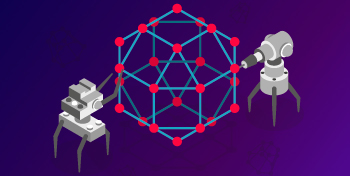In our last article, we figured out what a Bitcoin node is, and today let’s find out what a validator is.
A blockchain validator is a network node that helps process and validate transaction blocks on the platform so that they can be added to the blockchain permanent. Using the term “validator”, some people mean nodes that verify transactions on PoS blockchains. They contrast it with the term “miner” used on POW blockchain platforms.
However, block validation is a process that is equally applicable to both types of blockchain. A more correct synonym for mining, applicable to blockchain PoS, would be staking, the block confirmation process used on this type of platform. According to Coinmarketrate.com, there are a huge number of coins and tokens that support staking.
Since transactions in the blockchain are initiated by users, they are queued on the network for subsequent verification. Validator nodes then combine the individual transactions into a block to validate it. Each blockchain has its own rules regarding the number of transactions in a block. When a block is completed, validators process it to add it to the blockchain as a permanent record.
In some blockchains, validators can choose which transactions to combine into a block. This choice is not necessarily made in chronological order, but is determined by the validator’s preferences, usually based on transaction fees.
Fees are added to each blockchain transaction by the sender of the crypto assets, as an incentive for validators. Senders can choose the size of the fee, and they can even send a transaction without any commission at all.
However, transactions with very low or zero commission are more likely to be ignored by validators and thus may remain in an unconfirmed state for a long period of time. If a transaction is not added to the block for confirmation after a while, it is usually deleted from the network.
The actual block confirmation process differs between PoW-based blockchains such as Bitcoin (BTC) or Ethereum (ETH) and PoS blockchains such as Solana (SOL) or Ethereum 2.0.
How is the validation of blocks in the blockchain
- Validation on Proof of Work Blockchains
Validators on the PoW blockchain, often called miners, try to confirm the block by finding the answer to a complex computational puzzle. This process is competitive, and the first validator node that successfully solves the puzzle receives a certain amount of cryptocurrency for its efforts.
Solving a computational puzzle requires a huge amount of computational hash power, which is a very energy-consuming activity. Given the large number of blocks confirmed daily on large blockchains, some call the PoW model an environmental disaster.
For example, last year Bitcoin consumed 67 TWh of energy, and by the end of 2021, the network is projected to consume more than 90 TWh. The latter indicator is comparable to the energy consumption of countries such as the Philippines and Pakistan.
In addition to energy consumption, the POW blockchain is characterized by low transaction speed and high fees.
To become an individual validator in the POW blockchain, you must have a computer with very powerful hardware characteristics. But even in this case, your chances of successfully confirming the block are negligible, since you will be competing with massive mining pools with large resources.
Most of the network participants who want to receive rewards from mining on the POW blockchain join pools to receive a share of the validation reward.
- Validation on Proof of Stake Blockchains
The PoS block validation method has become a response to the energy-intensive and slow POW validation. In blockchain PoS, block validators are selected, as a rule, randomly based on the amount of cryptocurrency they are willing to “put on the line” to get the right validation.
For example, if you bet 2% of the total amount of cryptocurrency currently on the exchange, you will have about 2% chance of being selected as a validator of the next block. The selected validator node reviews the block and confirms or rejects it in exchange for some crypto reward.
Each PoS blockchain has its own validation features, but on most platforms, in order to be selected as a validator node, it is necessary to meet certain requirements. For example, the usual requirement in order to become a validator is the mandatory presence of at least a certain amount of cryptocurrency.
Some platforms may also have specific hardware requirements. Although PoS is not as demanding on resources as PoW, validator nodes on some PoS blockchains need good hardware or software, since they can process a large number of transactions over a certain period of time.
In general, PoS validation is very energy-intensive, fast and less costly than the PoW validation method. However, it has its drawbacks, for example, the possibility of concentrating power in the hands of network players who have seized a large percentage of the platform’s cryptocurrency.
PoS block validation also has an analogue of mining pools used in the POW blockchain. They are called staking pools. Network users, primarily those who do not qualify as validator nodes, can block their cryptocurrency in these pools in order to receive a permanent reward from block validation activities.
Some PoS blockchains have a validation system called Delegated PoS (DPoS). In such blockchains, ordinary network nodes can send their cryptocurrency to a pool representing a specific validator node. By placing their funds on this validator node, the nodes of the network, as they say, “vote” for the node they have chosen.
Each time the selected validator node successfully processes a block, the nodes that “voted” for it also receive their share of the reward. An example would be DecimalChain, with a DEL crypto asset.
What are the requirements for obtaining validator status on the largest blockchains
The POW and PoS blockchains have radically different requirements for qualification as a validator node. In the first case, in order to obtain the status, it is necessary to demonstrate significant hardware power, and in the second, as a rule, it is required to stake a non-trivial amount of cryptocurrency funds.
- Requirements for the Bitcoin Validator Node
The main requirement for running a Bitcoin validator/miner node is to have a computer system based on a hardware technology called an applied integrated circuit (ASIC). ASIC-based systems are specially designed for one purpose – cryptocurrency mining.
They are different from the standard PC systems that everyone is familiar with. ASIC systems are extremely powerful, and cost from 10,000 to 20,000 US dollars for models that can give you at least some chance to get a block.
However, even investing in such expensive equipment may not be enough for consistent and successful block verification. Massive mining pools dominating Bitcoin mining leave little chance for individual miners.
For a person interested in Bitcoin mining, the safest way is to purchase as powerful equipment as you can afford and join a fairly large mining pool.
Block Validation in Bitcoin

- Requirements for Validator Nodes in Ethereum
Mining in Ethereum works somewhat differently than in Bitcoin. The key difference is that the hardware requirements of the validator nodes are not so high. Instead of relying on ASIC technology, Ethereum mining is possible on sufficiently powerful modern PC systems equipped with as powerful a graphics processor (GPU) as you can afford.
Ethereum actively uses the computer’s GPU for mining operations, so having a powerful GPU is crucial. However, the best practical way to receive rewards from the verification of blocks in Ethereum is also to join a fairly large mining pool.
The concentration of mining capacity in Ethereum is not particularly different from the concentration in Bitcoin. Thus, your best chance to become a successful validator on Ethereum is to join a fairly active pool.
Requirements for the Validator node on Ethereum 2.0
Ethereum has launched its PoS-based network, Ethereum 2.0, which is currently running in parallel with the main PoW-based platform. In the spring of next year, Ethereum planned to complete the transition to the PoS network, but for now this transition has been postponed again.
Since Ethereum 2.0 is a PoS platform, it has completely different requirements for validator nodes compared to the PoW version. In fact, to become an Ethereum 2.0 validator, you will need to block 32 ETH on the network.
Just having 32 ETH in your wallet is not enough. You need to block/pledge 32 ETH specifically in order to get the right to become a validator node. When a transaction block requires validation, your node can be randomly selected for validation.
Blocking more than 32 ETH per node does not give you a better chance of being selected for block validation. However, if you want to maximize your chances of getting the next block, you can install additional nodes, lock 32 ETH on each node and increase your statistical chances of being selected.
The hardware requirements for the verifier node in Ethereum 2.0 are more modest than in Ethereum or Bitcoin. However, it is still recommended to use a PC with above-average characteristics so that the process goes smoothly.
Users who cannot or do not want to allocate 32 ETH to obtain the status of a verifier can place their funds in the pool and receive a smaller reward for verification.
Summing up
Blockchain validation means processing and confirmation of transaction blocks by certain validator nodes. As soon as the validator node confirms the block, it is added to the blockchain as a permanent record.
PoW and PoS have completely different validation procedures. In the PoW blockchain, validators, also called miners, try to solve a complex computational problem in a competitive mode in order to confirm a block.
On PoS platforms, the right to validation is usually secured by depositing a certain amount of cryptocurrency. On some platforms, the chance to get the right to confirm the next block increases if you bet on a large amount of cryptocurrency. However, in some other PoS blockchains, for example, in Ethereum 2.0, the bet amounts remain fixed for each validator node.
In such blockchains, validators can increase their chances of getting a choice by installing additional validator nodes of standard size.
Self-validation of blocks is a relatively unrealistic task, both in PoW and PoS networks. In PoW networks, you may need an exorbitantly large amount of computing power to have a chance in competition with large mining pools.
In PoS networks, you may need too large a share of the total amount of cryptocurrency to get block verification rights often enough. Therefore, in both types of blockchain, it is recommended to join a mining or staking pool in order to receive a permanent reward from block verification activities.


